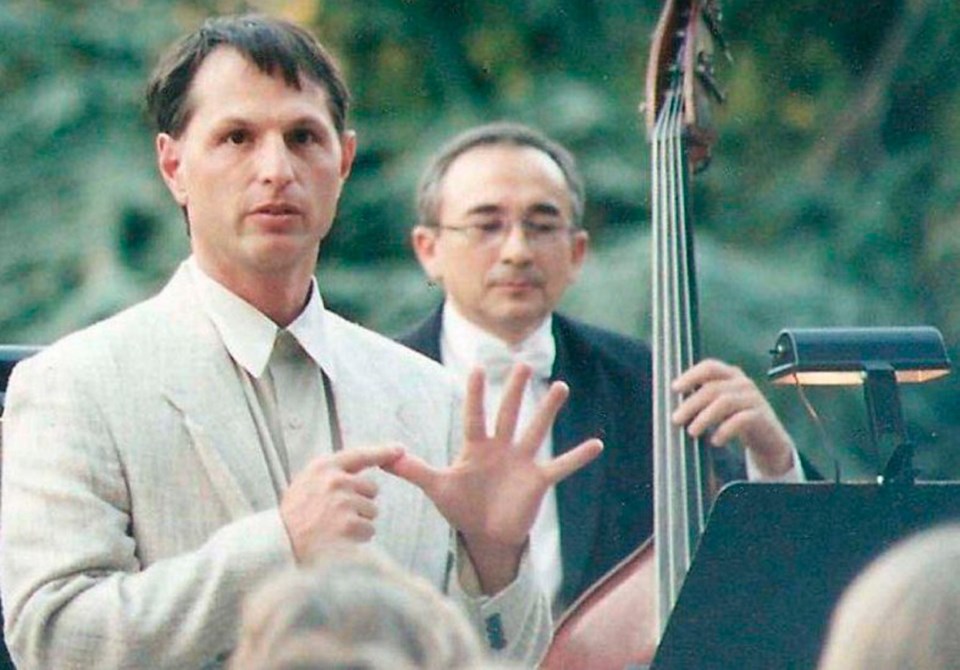When David A. Jaffe set out to write his newest composition, he started by looking backward.
The American composer has made a name for himself as a pioneer of electronic music, but as a teenager he occupied his time exploring the worlds of folk, bluegrass, jazz and classical music. Fox Hollow, which makes its world première Friday at Open Space, is an attempt to evoke the atmosphere of a music festival of the same name that he attended during that time in upstate New York.
“It was particularly magical because, for one, they had no electricity at all. So all the concerts were in a natural amphitheatre and people were just very quiet and listened under the stars,” said the resident of Berkeley, Calif.
Victoria’s Lafayette String Quartet commissioned the piece and will perform it as part of a series of discussions and concerts dedicated to Jaffe on Wednesday, Friday and Saturday. While folk music may seem an unlikely fit for a string quartet, it fits with Jaffe’s lifelong ethos of bridging seemingly incompatible sounds.
“I like putting things together that don’t normally go together and watching the dynamics,” he said. “Either highlighting the differences or trying to reconcile those differences and find commonality.”
The idea is more far-reaching than music.
“For me, it’s kind of symbolic of a lot of what we do in life: trying to bring together cognitive dissonance and make sense of it all.”
Jaffe will be in Victoria this week for a mini festival in his name. On Wednesday at 8 p.m. he gives a concert and lecture on his landmark work Silicon Valley Breakdown, which attempted to answer the question, “What would it sound like if you plucked the cables of the Golden Gate Bridge?”
Jaffe composed the piece in 1982 and, alongside three engineers, developed an entirely new program for producing electronic music.
“We ended up pretty much inventing a new way of making sound on the computer, which worked off physical models,” he said.
Instead of imitating the way an instrument sounds by recording it, they simulated the physics of each instrument through the computer.
“If you start with something that matches the physics of the real world, you can then — because it’s a computer — distort it and extract it and extend it in all kinds of different directions,” he said.
On Friday at 8 p.m., the Lafayette String Quartet will perform alongside UVic music professor Andrew Schloss, a long-time friend and collaborator of Jaffe’s, as well as Trimpin and Scott MacInnes.
On Saturday at 8 p.m., Jaffe joins UVic faculty as part of GuitarWorks at the Phillip T. Young Recital Hall.
Among the 11 works scheduled to be performed this week, Jaffe will present the Canadian debut of The Space Between Us, which he wrote for his friend and mentor Henry Brant. When Brant died, he left in his will a variety of instruments for Jaffe. So Jaffe approached their mutual friend Trimpin, known for creating sound sculptures, for a collaboration. The result of that collaboration is an intricately designed performance, with string players interspersed among audience members, as well as electronically controlled instruments.
Trimpin will be at the concert Friday.
While the concepts behind both The Space Between Us and Fox Hollow have ties to specific memories for Jaffe, he said his composition process is about casting a wide net.
For a set time period at the beginning, typically a week, it’s all about free association. He carries a notebook and jots down any idea that crosses his mind — from instrumentation, sound and musical concepts, to art and politics. Next, he begins looking at them all together. He might write them on index cards, sort them in piles and discard some, he said.
“Little by little, I start to see a shape emerging — kind of like if you’re in an airplane flying overhead. You can see the general shape of it, but you can’t see any detail.”
As he works on the piece, the details emerge. And by the time he starts composing, he can start anywhere — there’s enough form to work with that he could start in the middle, rather than moving from beginning to end.
“Composing in general for me, it involves the process of starting with almost infinite possibilities and narrowing it down.”
